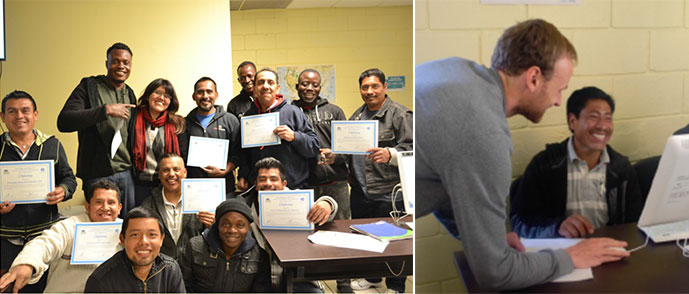Tijuana, March 2019 – While the caravans crossed the rest of the country, Tijuana suffered from outbreaks of new bars, razor barbed wire and military agents on the border with the United States; Trump threatening even more restrictive immigration policies, and groups of xenophobic people in the city who demonstrated in various ways against Central Americans on the way. The atmosphere became tense, some of the Central American people staying at the Casa del Migrante in Tijuana stopped being hired in jobs where they previously accepted foreign workers and/or had received some kind of insult in the street. It was speculated that waiting times for “the list” of the El Chaparral checkpoint for people to cross into the US was three to six months. The municipal government, meanwhile, called for shelters in the city to account for available spaces for migrants; the sum was 700 spaces between all the shelters in Tijuana. That figure clearly would not be enough to serve the 7 thousand people expected to receive this city. In the Casa del Migrante in Tijuana, we had a clear idea of the maximum capacity of the shelter, what was being tested was how much we could strengthen, in the immediate term, the system of social integration with which we worked. With the previously described context, how would we get the message that they belong to a decent and safe place where they can build their lives, regardless of the side of the border where they decided to stay? […]
How did the Casa del Migrante in Tijuana respond to the caravans?
While all that was happening, the Casa del Migrante in Tijuana, the largest capacity shelter (150 people) and trajectory (31 years of experience) in the city, received members of the caravans exceeding its limits since most of the people – some among them, and in a joking tone called themselves members of the caravans – they had developed a sense of belonging to the collective quite solid and sought to stay together in temporary shelters that did not necessarily have adequate facilities. However, together with the support of UNHCR, the Casa del Migrante in Tijuana made an effort to identify in these temporary shelters people with international protection needs to channel them to COMAR, initiate their asylum application in Mexico and refer them to any of the shelters with experience in serving migrant and refugee population in the city.
La Casa del Migrante in Tijuana has long generated a model of social inclusion for migrants in Mexico that includes, in addition to basic services such as lodging and food, social workers, psychologists, lawyers, doctors, responsible for processing documents and labor insertions. The Scalabrini Training Center for Migrants (CESFOM) has recently been implemented, the Casa’s educational project. This interdisciplinary team works permanently within the shelter and serves approximately 9,000 migrant people per year, who can stay at the facilities for a maximum of 45 days.
In the face of the emergency, what did the Casa’s model of social insertion aspire to? […]
The House, through CESFOM, was just looking to be a support for migrants and refugees – and those who take care of them – to discover and never forget, no matter how many borders they traversed, their capacity to flourish in any part of the world where they live. And we would achieve this goal with the most powerful tool of resilience and freedom: education.
The program of education in emergencies sought to address the emotional state through group therapy of people, which is key so that they can develop and strengthen skills that allow them to protect themselves from the risks inherent to the circumstances in which they find themselves.
For example, given the uncertainty about the response by the Mexican and US governments to their asylum requests, the feeling of uprooting, family separation, violence to which they have been exposed from their countries of origin, among other factors, exposes to migrants and refugees, to risks such as the consumption of psychoactive substances, deterioration of their mental health, human trafficking, recruitment by organized crime, illicit trafficking in persons, among others. The program also included the teaching of life skills that allowed migrants and refugees to face the challenges of a new reality and build a life plan, so we offered workshops in areas of prevention of sexually transmitted infections, training for their human and labor rights in Mexico, language classes and computers. We try to promote in each activity values such as respect, peace, conflict resolution, and equal rights.
At the end of the emergency education program, we managed to create a safe space for people to develop and strengthen their own abilities to face the new challenges. We provided clear information so that each one could make the decision that would allow him to build a worthy future in the destination they chose, while the sense of belonging and fellowship became evident on a daily basis inside and outside the facilities of the Casa del Migrante. At the beginning of January, all the participants had their visitor card for humanitarian reasons and they had started working in the city.
María José Juárez Becerra. Coordinator of Operations of CESFOM


